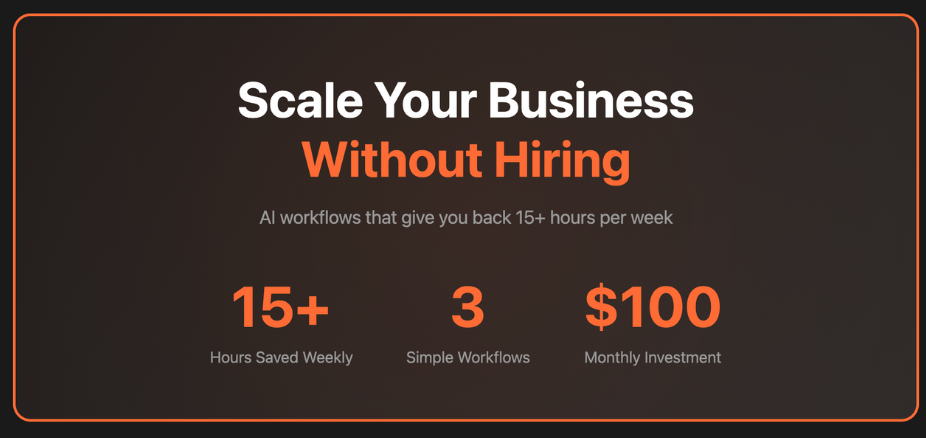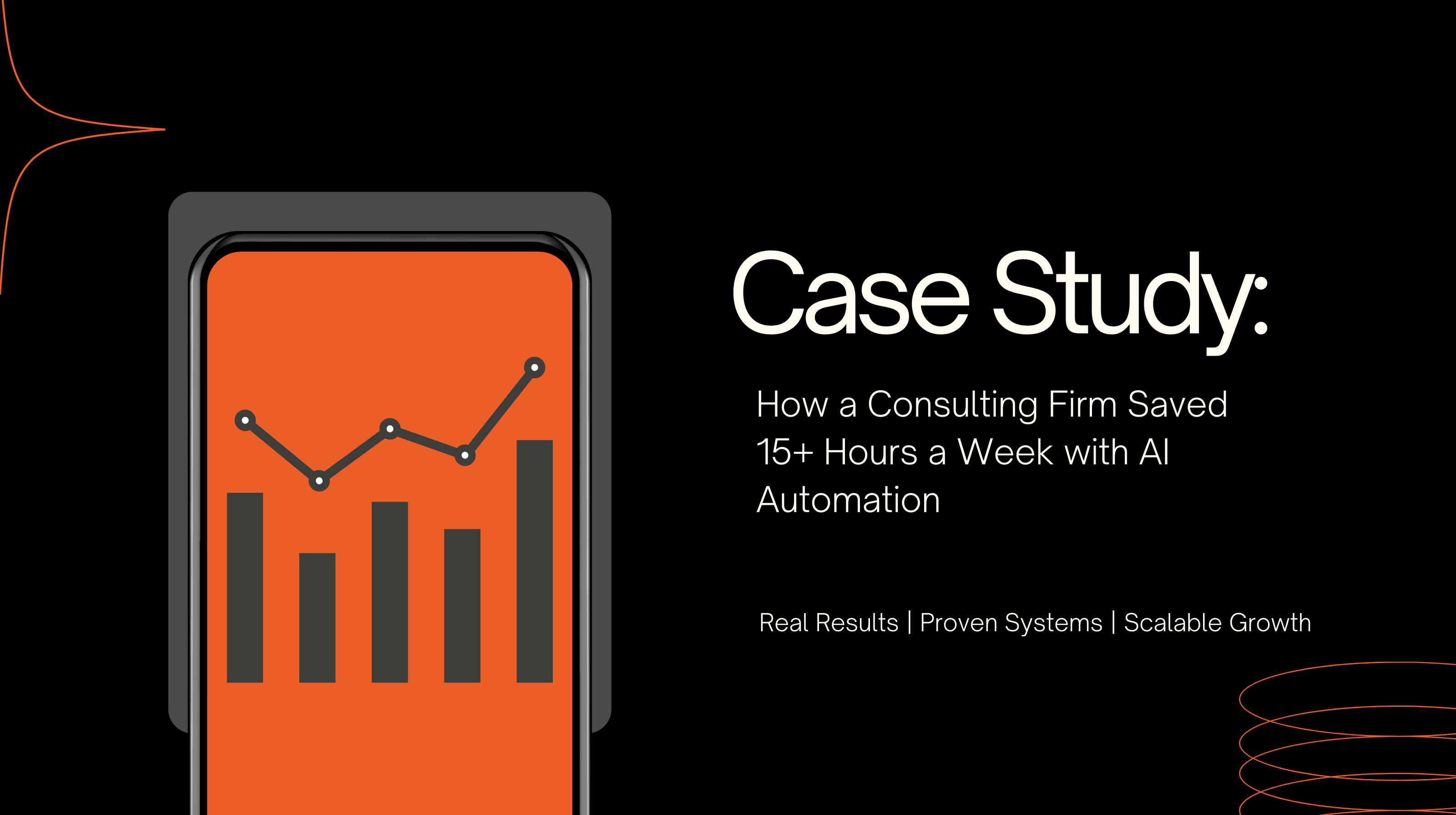In today’s digital world, businesses generate massive amounts of data daily. Managing this data long-term is challenging, especially when balancing cost, compliance, and accessibility. AI-powered cloud archiving offers a solution by automating storage, improving data retrieval, and ensuring regulatory compliance.
Key Takeaways:
Challenges
Future Trends
By leveraging AI and cloud technologies, businesses can store data securely, meet compliance needs, and extract value from archives without overspending.
Using AI to Improve the Archiving Process - Digital CxO - EP97
Benefits of AI-Driven Long-Term Data Archiving
AI-powered archiving transforms traditional storage into dynamic systems that bring measurable value to businesses. With up to one-third of digital content now requiring retention for more than seven years, finding efficient archiving solutions has become a priority for organizations aiming to stay competitive and compliant.
The adoption of AI-driven approaches is gaining momentum. By 2030, half of all organizations are expected to use AI-assisted archiving, while 40% will leverage AI-enabled archives to generate real-time insights. This shift highlights the growing awareness that well-managed archived data can unlock new opportunities.
Improved Data Discoverability
Managing vast archives filled with diverse file types is challenging, especially when relying on traditional keyword searches. AI simplifies this process by introducing semantic search capabilities, allowing users to search for concepts rather than specific keywords. This means employees can find the information they need by describing it naturally, without struggling to guess exact terms.
AI-powered algorithms significantly improve the accuracy and speed of searches. Using Natural Language Processing (NLP) and Machine Learning (ML), these systems provide advanced context-based retrieval. For instance, a query like "patient safety incidents from 2019" can automatically surface related medical records, reports, and correspondence - even if the exact keywords aren’t used.
AI also personalizes search results by recommending documents based on a user’s history, further enhancing accessibility. Companies like Preservica showcase this with AI-powered metadata enrichment, which improves discoverability through transcription, translation, classification, redaction, and scene description. Their integration with Microsoft Copilot enables natural language queries, making data discovery faster and knowledge reuse more seamless.
"In the era of AI, trusted long-term content is a strategic asset - essential not just for compliance, but for powering AI.
Automated metadata enrichment also plays a crucial role in classifying and retrieving data efficiently. These systems can generate metadata when it’s missing, identify sensitive materials, and ensure non-sensitive content remains accessible. This not only boosts operational efficiency but also reduces costs.
Cost Optimization
AI brings significant cost savings by automating labor-intensive data management tasks. It streamlines data classification, helping organizations decide what to retain and what to discard, reducing the workload for IT teams. This consistency minimizes human error and ensures retention policies are applied accurately.
Another major advantage is storage optimization. AI algorithms use intelligent compression techniques to reduce storage space while maintaining data integrity. By analyzing patterns, these algorithms identify the most efficient compression methods for various file types, ensuring maximum storage efficiency.
Jon Fielding, MD at Apricorn, explains the financial impact:
"By reducing the volume of unnecessary data and optimizing storage use, organizations can achieve substantial cost efficiencies."
AI also enables tiered retention policies, automatically moving data between storage tiers based on usage patterns and regulatory requirements. This prevents unnecessary expenses. While savings depend on factors like company size and data volume, the combined reduction in manual labor, storage costs, and compliance risks delivers a solid return on investment for businesses adopting AI-driven archiving solutions.
Beyond cutting costs, AI strengthens compliance efforts.
Regulatory Compliance and Risk Management
Navigating the complex regulatory landscape in the U.S. is no small feat, especially when compliance failures can lead to hefty penalties. In 2023, global regulators imposed $10.5 billion in fines, and U.S. companies spent 1.3% to 3.3% of their wage bills on compliance, dedicating around 4,300 hours annually to meet requirements.
AI alleviates this burden through intelligent automation and proactive monitoring. It automates tasks, analyzes data for potential risks, and provides real-time alerts about regulatory changes. This ensures businesses stay ahead of evolving rules without constant manual oversight.
AI also enhances precision by consistently adhering to established rules, reducing the likelihood of errors. It can identify sensitive content, infer document relationships, and adjust policies as regulations evolve, helping organizations avoid costly violations.
A standout example is Iron Mountain's InSight Data Experience Platform. In 2023, reported that organizations using this platform saw $5.29 million in benefits over three years compared to $1.78 million in costs - a 196% ROI. The platform improved document search efficiency by 40%, cataloging by 55%, and compliance time by 25%.
AI can even suggest policy updates in response to regulatory changes, ensuring retention policies stay current and reducing the risk of violations. This proactive approach minimizes financial penalties and safeguards a company’s reputation.
Heather Herbst, IDC research director for the Office of the CFO, emphasizes the broader impact:
"Compliance can affect not only the investors, owners, and board of directors but also those who are employed at the company; therefore, it affects many people's lives and can change the trajectory of the company and its employees."
For businesses adopting AI-driven archiving strategies, integrating custom automation platforms - like Devcore’s Leverage Blueprint™ - can enhance these benefits. These tools not only ensure compliance but also transform archival data into actionable insights, driving measurable savings and improved regulatory adherence.
Challenges in Long-Term Cloud Data Archiving
While AI-driven cloud archiving brings many benefits, businesses often encounter significant challenges when implementing these systems. Addressing these issues early can save time, money, and frustration, ensuring that archival investments deliver the desired results.
Data Retrieval Complexity
As the amount of archived data grows, finding and accessing specific information can become a major headache. Larger data volumes mean more chances for delays and bottlenecks, which can disrupt operations and frustrate users.
Inadequate indexing and poorly configured storage systems are common culprits. For instance, if active data is mistakenly stored in a cold storage tier, retrieval times can be much longer than expected. Cold storage tiers, like Amazon S3 Glacier, are designed for infrequent access, and retrieval times can range from minutes to nearly two days, depending on the storage type:
Nick Soper, a cloud product manager at Tyrell, highlights how easily businesses can run into trouble:
"(Broadcasters new to cloud) will often experiment and try things themselves initially, but they usually get burned by cost after leaving an EC2 instance on over the weekend, for example".
To avoid such pitfalls, businesses should establish robust indexing and tagging systems. Tags can include details like data category, retention period, and origin system, making it easier to locate specific files. A tiered storage strategy is also key - frequently accessed files should remain in faster, more accessible storage tiers, while older or less critical data can move to cost-effective cold storage. Regular retrieval drills can help verify that systems perform as expected, and automating data migration to cold storage after a set period can prevent costly errors.
Compliance and Legal Risks
Another major hurdle in cloud archiving is navigating the complex world of regulatory compliance. With over 137 countries enforcing data protection and sovereignty laws, businesses must juggle a growing web of requirements. Failing to comply can lead to severe penalties and reputational damage.
The risks are real: 80% of companies have experienced a cloud-related breach, and 82% of these breaches involved cloud-stored data. The average cost of a breach across multiple environments now sits at $4.75 million. Alarmingly, human error plays a role in 55% of cases. These statistics underscore the need for strong safeguards and automated processes within archival systems.
The challenge becomes even trickier when regulations conflict across jurisdictions. According to Wiz:
"soon, the terms 'cloud compliance' and 'AI compliance' will mean the same thing. That's how connected they are.".
To stay ahead, organizations should create a clear information governance framework. This framework should outline how data is stored, accessed, and protected. Features like encryption, access controls, and activity logging are essential for meeting compliance standards. Regular audits, employee training, and risk assessments can further reduce vulnerabilities.
Data Integrity Issues
Maintaining data integrity over time is another critical challenge. Integrity ensures that data remains accurate, consistent, and reliable throughout its lifecycle. However, as data ages and storage technologies evolve, preserving this reliability becomes increasingly complex.
Data integrity is particularly important for organizations using AI-powered archival systems. AI systems rely on accurate, high-quality data to function effectively. When integrity issues arise in large datasets, the consequences can ripple across decision-making and operations.
One example of addressing this challenge comes from Guidewire, which revamped its Data Integrity Service in 2025. By adopting a Data Lakehouse-based architecture, the company cut operating costs by 80% while enhancing scalability and validation speed.
To safeguard data integrity, businesses should implement validation checks during data entry to ensure compliance with predefined rules. Regular backups are crucial for protecting against hardware failures or cyberattacks, and a solid recovery plan ensures data can be restored if needed. Versioning and timestamps can help track changes over time, making it easier to identify and fix discrepancies. Detailed logs of data access and changes also support monitoring and forensic analysis.
For AI-driven systems, it’s essential to conduct data-quality testing throughout the AI lifecycle and continuously monitor system inputs and outputs to ensure they perform as intended.
sbb-itb-d7ea0c6
Best Practices for Scalable and Compliant Cloud AI Archiving
Tackling issues like data retrieval, compliance, and integrity requires a thoughtful approach to AI-driven archiving. The key lies in balancing automation, standardization, and seamless integration.
Automated Data Lifecycle Management
Automated Data Lifecycle Management (DLM) simplifies how data is handled from creation to deletion. By replacing manual processes with AI, organizations can manage data more intelligently and reduce errors. Modern DLM systems actively interpret content and adjust policies automatically to meet compliance and security needs.
The process starts with a complete discovery of all data. This means identifying where data resides, how it moves through systems, and when it becomes a security or compliance risk. This discovery phase is crucial for uncovering hidden data repositories and creating a foundation for automated classification.
AI-powered classification is the next step. These systems categorize data based on its content, source, and business value, ensuring policies are applied correctly from the start. This reduces misclassification risks and streamlines data deletion when it's no longer needed.
Key policies for automation should cover:
Implementing least privilege access controls is another essential step. This restricts access to sensitive archived data to authorized personnel only, which becomes increasingly important as data volumes grow. Organizations should also enforce strict deletion policies to ensure unnecessary data is removed automatically. Regular policy reviews help keep DLM strategies aligned with changing business and compliance needs.
Metadata Enrichment and Standardization
With the massive amounts of data generated daily, managing metadata effectively is critical for keeping archives organized and accessible. Metadata enrichment adds valuable context, making data more useful for analytics and AI applications.
Using standardized metadata frameworks ensures consistency across different systems and data sources. This consistency makes it easier for AI systems to locate and integrate older data, regardless of its origin or how long it has been stored.
A great example of this is Platform 3 Solutions’ Archon Data Store, introduced in July 2025. Their system uses detailed metadata mapping to classify data by value, sensitivity, and regulatory requirements. This approach not only maintains compliance but also speeds up search and retrieval processes.
Real-time metadata capture is also essential. AI tools that extract and enrich metadata as data is ingested prevent the loss of information that can occur when metadata is added later. Regular metadata audits ensure accuracy and identify any gaps, while clear governance roles help maintain these processes over time.
Enriched metadata doesn’t just improve organization - it also supports advanced AI applications, compliance reporting, and in-depth analytics on historical data. For companies bound by regulations like GDPR, CCPA, or HIPAA, strong metadata management simplifies compliance and makes handling data requests more efficient.
Integration with Custom Automation Platforms
Integrating cloud AI infrastructure with custom automation platforms enhances archiving by connecting archival systems with operational workflows. This ensures archived data is not just stored but remains accessible and actionable.
Practices like Infrastructure as Code (IaC) are foundational for these integrations. By defining infrastructure through code, organizations can version-control their systems and deploy them consistently. GitOps workflows allow teams to track changes and quickly fix any issues.
Service orchestration platforms play a key role in automating tasks like data classification, retention enforcement, and compliance reporting. Role-based access control (RBAC) ensures that users interact with systems based on their permissions, enhancing security.
Custom platforms like Devcore take this further with tailored integrations. Their Leverage Blueprint™ approach identifies inefficiencies and creates automation solutions that link archival systems with business processes. For instance, CRM systems could automatically trigger archival policies when deals close, or AI tools could query archived data to generate business insights.
Automation also governs compliance and cost controls. Policies can move data between storage tiers based on usage, enforce retention schedules, and create compliance reports. Automated monitoring tools can even adjust resources based on utilization, helping optimize costs while maintaining performance.
Continuous monitoring and optimization are vital to keeping these systems adaptive. Techniques like MLOps automate tasks such as version control and performance tracking for AI components, while A/B testing evaluates changes to improve systems over time.
Interoperability is another critical factor, especially in multi-cloud setups. Standardized APIs and data formats prevent vendor lock-in and allow for flexible architectures. AI-powered cost management tools further help forecast resource needs and manage expenses across platforms.
The result? An archiving system that does more than store data - it transforms it into a strategic asset. Archived data becomes easy to access, analyze, and apply to current challenges, ensuring that organizations get the most out of their investments while setting the stage for future growth and scalability.
Future Trends and Planning Considerations
Cloud AI archiving is advancing swiftly, fueled by cutting-edge technologies and evolving business demands. For organizations shaping their long-term data strategies, it’s essential to stay ahead of emerging trends that will redefine how archived data is stored, accessed, and utilized in the years ahead.
AI Advancements for Data Archiving
The rise of Large Language Models (LLMs) and multimodal AI has revolutionized how archived data is retrieved. These technologies enable semantic searches and seamless integration across various data formats, making it easier to extract meaningful insights. As Nguyen et al. point out, advanced frameworks are already enhancing smart search capabilities in archival systems.
Multimodal AI, which combines text, images, audio, and video, is transforming access to mixed-format archives. Improvements in Natural Language Processing (NLP) allow AI systems to grasp context, intent, and subtle nuances in documents. This means regulatory information or historical insights, which might have been overlooked, can now be retrieved with greater accuracy and efficiency.
The AI market's projected growth - from $273.6 billion today to an estimated $5.26 trillion by 2035, with a 30.84% annual growth rate - illustrates the increasing sophistication and accessibility of these tools.
Cloud-Native Technology Developments
Cloud-native architectures are reshaping data archiving by separating storage and compute functions, enabling businesses to scale each independently. This approach, paired with pay-as-you-go pricing, ensures that organizations only pay for the resources they use, making advanced archiving solutions accessible to companies of all sizes.
This separation offers flexibility, allowing businesses to expand storage without increasing compute costs or ramp up processing power for complex queries without overprovisioning storage. Such adaptability is especially helpful for organizations with seasonal data needs or growing archive volumes.
Auto-scaling capabilities further enhance efficiency by dynamically adjusting resources based on demand. This prevents performance issues and resource waste, creating a reliable foundation for scalable growth strategies.
Scalability and Business Growth
Scalability is key to managing growing data volumes while keeping costs under control. Tiered storage and hybrid scaling approaches are becoming more advanced, allowing businesses to optimize performance and cost simultaneously. For instance, archiving dormant data can lead to a 30% increase in system performance, freeing up active systems to focus on current operations.
Tiered storage systems are evolving, with AI-driven tools automatically shifting data between performance levels based on usage patterns, regulatory needs, and cost considerations. Frequently accessed data can be stored in high-performance systems, while less critical historical archives are moved to cost-effective cold storage.
The global cloud infrastructure services market, which reached $330 billion in 2024, highlights the significant investments being made in scalable technologies. Hybrid scaling, which combines horizontal and vertical scaling, ensures that archiving systems can adapt to changing business demands without requiring a complete overhaul.
"Scalability plays a critical role in maintaining both performance and financial control. A scalable cloud environment allows organizations to meet demand efficiently, avoid unnecessary spending, and align infrastructure with business needs." - Juliana Costa Yereb, Senior FinOps Specialist
As regulations evolve, future-ready archiving systems must be equipped to handle new retention policies, data sovereignty requirements, and privacy mandates without extensive reconfigurations. Platforms like Devcore's Leverage Blueprint™ showcase how tailored automation can support long-term archiving needs.
AI-powered cost optimization strategies are also refining resource allocation, ensuring that archiving infrastructures scale seamlessly alongside business growth. By adopting flexible, cloud-native solutions, organizations can align their archiving strategies with technological advancements and evolving business goals.
Conclusion
Long-term data archiving powered by cloud-based AI is reshaping how organizations handle increasing data volumes. It not only ensures compliance and manages costs but also brings tangible improvements to business operations and decision-making. This approach seamlessly combines operational efficiency with compliance enhancements, creating a solid foundation for a forward-thinking data strategy.
From a cost perspective, the advantages are clear. Cloud AI eliminates the need for hefty, upfront investments in hardware and software, making it a more budget-friendly option. Automated features like storage tiering, deduplication, and backup scheduling reduce the burden on administrative teams, while real-time monitoring allows for dynamic scaling - ensuring resources are allocated only as needed. Gartner predicts that by 2027, AI-enabled active metadata management could cut the time to deliver new data assets by up to 70%. Additionally, AI improves data quality by spotting anomalies early, reducing pipeline failures, and speeding up data integration from weeks to mere days or even hours.
Security and compliance are another standout benefit. AI’s ability to detect and address security threats in real time provides strong protection for archived data. When paired with well-defined governance frameworks, these tools help organizations meet standards like HIPAA, GDPR, and SEC regulations. This combination of security and compliance ensures that data archiving remains both reliable and legally sound.
Looking ahead, successful implementation hinges on strategic planning and execution. Organizations should prioritize clear archiving policies, robust security protocols, and automation tools to streamline data management. Regular testing of retrieval processes ensures archived data is accessible when needed, and annual reviews of retention policies help adapt to changing business goals and regulatory demands. By taking these steps, businesses can fully leverage the benefits of cloud AI for long-term data archiving.
FAQs
How does AI-powered cloud archiving help meet compliance requirements for regulations like GDPR, HIPAA, and CCPA?
AI-powered cloud archiving takes the hassle out of compliance by automating essential tasks like data monitoring, threat detection, and secure storage. It ensures that data is managed according to regulatory standards, covering areas like retention periods, limited data usage, and secure access controls.
With AI in the mix, businesses can spot compliance risks early, simplify reporting processes, and keep audit-ready records at all times. This not only helps prevent regulatory violations but also saves valuable time and resources. Plus, it allows companies to stay focused on growth while meeting requirements for regulations such as GDPR, HIPAA, and CCPA.
What are the cost advantages of using AI-powered archiving over traditional data storage methods?
AI-powered data archiving offers major cost savings through its ability to scale efficiently and manage resources smarter. Unlike older storage methods, AI fine-tunes storage management, helping businesses cut down on operational expenses over time.
On top of that, AI-based tools can handle repetitive tasks like sorting and retrieving data automatically. This not only saves time but also trims labor costs, making it a smart option for companies dealing with massive amounts of data while aiming to simplify their workflows.
What steps can businesses take to maintain data integrity and reliability with AI-driven cloud archiving solutions?
To ensure data integrity and reliability when using AI-driven cloud archiving, businesses should focus on a few essential practices:
By integrating these strategies into their data management approach, companies can keep their archived data secure, precise, and dependable for the long haul.
Related posts
- Manual Workflows Slowing Growth? AI Solutions
- Real-Time Data Sync with AI: What to Know
- Error Handling in AI Workflows: Challenges and Solutions
- How AI Enhances Real-Time Workflow Reporting
{"@context":"https://schema.org","@type":"FAQPage","mainEntity":[{"@type":"Question","name":"How does AI-powered cloud archiving help meet compliance requirements for regulations like GDPR, HIPAA, and CCPA?","acceptedAnswer":{"@type":"Answer","text":"<p>AI-powered cloud archiving takes the hassle out of compliance by automating essential tasks like data monitoring, threat detection, and secure storage. It ensures that data is managed according to regulatory standards, covering areas like <strong>retention periods</strong>, <strong>limited data usage</strong>, and <strong>secure access controls</strong>.</p> <p>With AI in the mix, businesses can spot compliance risks early, simplify reporting processes, and keep audit-ready records at all times. This not only helps prevent regulatory violations but also saves valuable time and resources. Plus, it allows companies to stay focused on growth while meeting requirements for regulations such as GDPR, HIPAA, and CCPA.</p>"}},{"@type":"Question","name":"What are the cost advantages of using AI-powered archiving over traditional data storage methods?","acceptedAnswer":{"@type":"Answer","text":"<p>AI-powered data archiving offers <strong>major cost savings</strong> through its ability to scale efficiently and manage resources smarter. Unlike older storage methods, AI fine-tunes storage management, helping businesses cut down on operational expenses over time.</p> <p>On top of that, AI-based tools can handle repetitive tasks like sorting and retrieving data automatically. This not only saves time but also trims labor costs, making it a smart option for companies dealing with massive amounts of data while aiming to simplify their workflows.</p>"}},{"@type":"Question","name":"What steps can businesses take to maintain data integrity and reliability with AI-driven cloud archiving solutions?","acceptedAnswer":{"@type":"Answer","text":"<p>To ensure <strong>data integrity and reliability</strong> when using AI-driven cloud archiving, businesses should focus on a few essential practices:</p> <ul> <li>Employ <strong>encryption</strong> and secure transfer protocols to safeguard data both in transit and at rest.</li> <li>Set up <strong>access controls</strong> to restrict sensitive information to authorized personnel only.</li> <li>Conduct regular <strong>data validation</strong> and audits to spot and address any inconsistencies.</li> <li>Use <strong>cryptographic hashes</strong> and checksums to monitor and confirm data accuracy over time.</li> </ul> <p>By integrating these strategies into their data management approach, companies can keep their archived data secure, precise, and dependable for the long haul.</p>"}}]}




